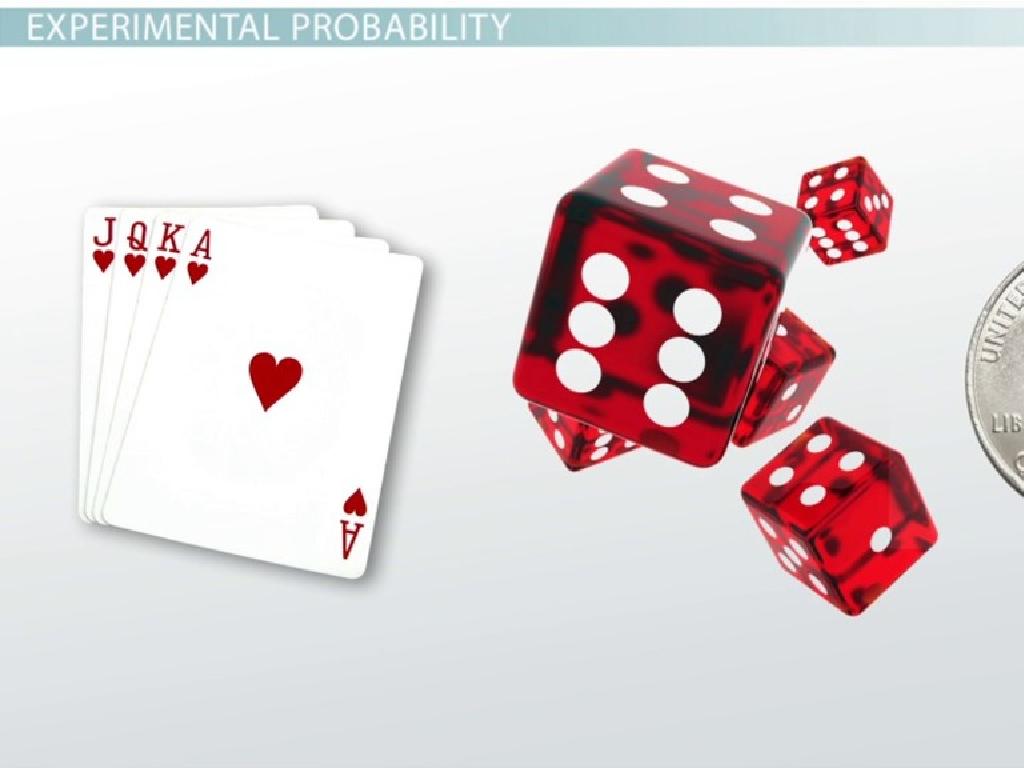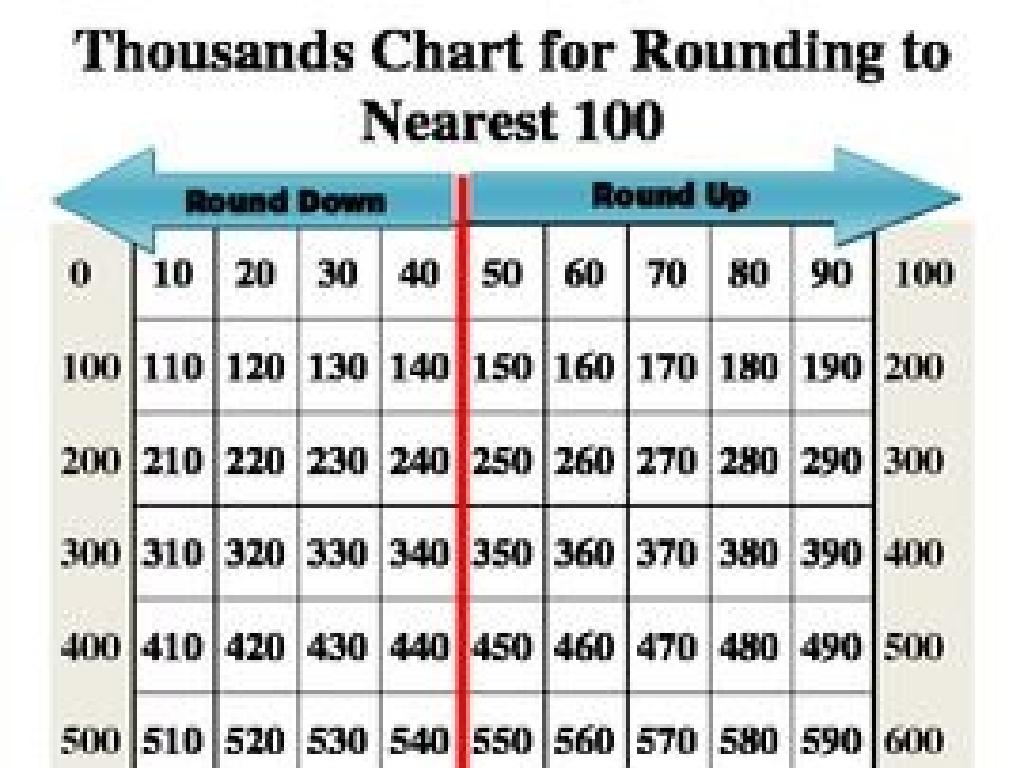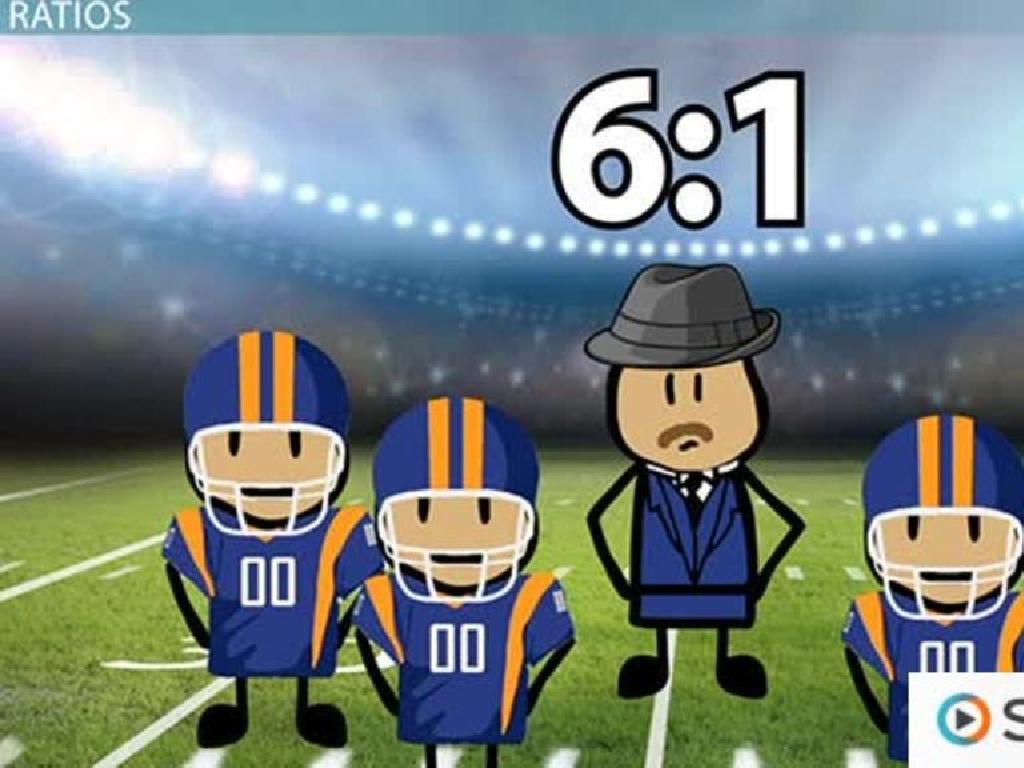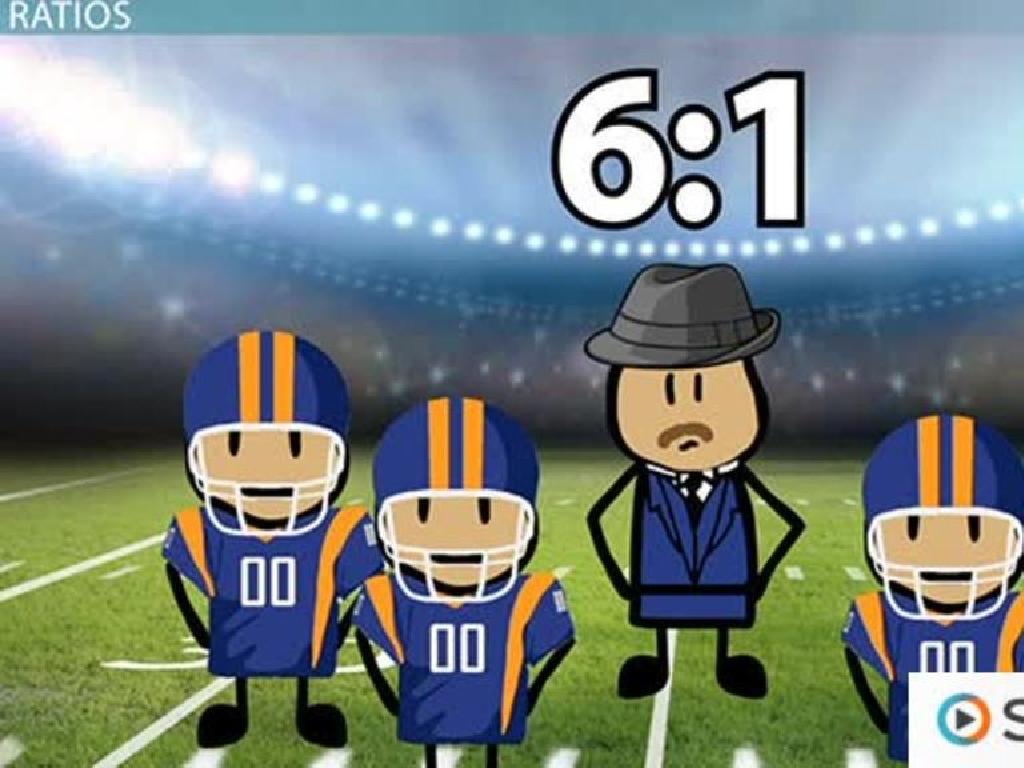Identify Changes In Gravitational Potential Energy
Subject: Science
Grade: Sixth grade
Topic: Kinetic And Potential Energy
Please LOG IN to download the presentation. Access is available to registered users only.
View More Content
Exploring Gravitational Potential Energy
– Kinetic vs. Potential Energy
– Kinetic energy is motion; potential energy is stored based on position
– Today’s focus: Gravitational Potential Energy
– Gravitational potential energy is energy stored due to an object’s height
– Height’s role in potential energy
– The higher an object is, the greater its potential energy due to gravity
– Higher height means more energy
|
Begin with a review of kinetic and potential energy to ensure students understand the difference. Kinetic energy is the energy of motion, while potential energy is stored energy based on an object’s position or state. Today, we’ll focus on gravitational potential energy, which is the energy an object possesses because of its position above the ground. Explain that the higher an object is lifted, the more gravitational potential energy it has. This is because if it were to fall, it would gain speed and thus kinetic energy, showing a conversion between potential and kinetic energy. Use examples like a book on a shelf or a ball at the top of a hill to illustrate this concept. Encourage students to think of other examples where height affects potential energy.
Understanding Energy: Types and Examples
– Energy defined as work capability
– Kinetic vs. Potential Energy
– Kinetic: motion energy, Potential: stored energy
– Everyday examples of energy
– Eating food for energy, Using batteries
– Exploring gravitational potential energy
– Gravitational: energy due to height
|
Energy is a fundamental concept in science, defined as the ability to do work or cause change. Introduce students to the two main types of energy: kinetic (energy of motion) and potential (stored energy). Use relatable examples like eating food for energy or batteries powering a toy to illustrate the concept. Highlight gravitational potential energy by discussing how objects at a height have stored energy due to gravity. Encourage students to think of examples where they observe energy in their daily lives, and how potential energy can change into kinetic energy, such as a ball rolling down a hill.
Exploring Gravitational Potential Energy
– Understanding Potential Energy
– Stored energy in objects at rest
– Factors affecting Potential Energy
– Influenced by object’s shape, position, and condition
– Gravitational Potential Energy
– Energy due to an object’s height above ground
– Role of height in Gravitational Potential Energy
– Higher the object, more the gravitational potential energy
|
This slide introduces the concept of potential energy as a form of stored energy, which is not in motion but has the potential to do work. Emphasize that potential energy can be affected by an object’s shape, position, and condition. Specifically, gravitational potential energy is the focus, which is the energy stored in an object as a result of its vertical position or height. The higher an object is positioned above the ground, the greater its gravitational potential energy. Use examples like a book on a shelf or a ball at the top of a hill to illustrate this concept. Encourage students to think of other examples where gravitational potential energy might be observed in their daily lives.
Exploring Gravitational Potential Energy
– GPE and object’s height
– GPE increases with height; it’s the energy due to position above ground.
– GPE formula: GPE = mgh
– m is mass in kilograms, g is gravity (9.8 m/s^2 on Earth), h is height in meters.
– Measuring GPE in Joules
– Joules are the units for energy; 1 Joule is the energy used to lift 1 kg by 1 meter.
– Factors affecting GPE
– GPE changes with mass, gravity, and height. More mass or height means more GPE.
|
This slide introduces the concept of Gravitational Potential Energy (GPE) to sixth-grade students. GPE is the energy that an object possesses due to its position above the ground. The formula GPE = mgh combines mass, gravity, and height to calculate an object’s potential energy in Joules. Emphasize that as an object’s height increases, so does its GPE. Use relatable examples, such as lifting a book to a higher shelf increases its GPE. Explain that the Earth’s gravity is a constant, but GPE can vary with different masses and heights. Encourage students to think of situations where GPE might change, like a roller coaster reaching the top of a track.
Exploring Gravitational Potential Energy (GPE)
– Height increases GPE
– The higher an object, the greater its GPE
– Compare GPE at different heights
– Objects at various heights have different GPE values
– Real-life example: Water reservoir
– Water high in a reservoir has more GPE, which can be harnessed for energy
– Understanding GPE in everyday life
|
This slide aims to help students understand how gravitational potential energy (GPE) is affected by the height of an object. The key concept is that the higher an object is positioned above the ground, the more GPE it has. Students should compare the GPE of objects at different heights to grasp this concept better. Use the example of water in a reservoir to illustrate how GPE can be observed in real life and its practical applications, such as hydroelectric power. Encourage students to think of other examples where GPE changes due to height, like a book on a shelf or a bird flying at different altitudes.
Calculating Gravitational Potential Energy (GPE)
– Steps to calculate GPE
– GPE = mass (kg) x height (m) x gravity (9.8 m/s^2)
– Example: GPE of a cliff rock
– If a rock is 2kg and on a 10m cliff, GPE = 2 x 10 x 9.8
– Practice: GPE of a book on a table
– Find the mass of the book and height of the table to calculate
|
This slide introduces students to the concept of gravitational potential energy (GPE) and how to calculate it. Begin with explaining the formula GPE = mass x height x gravity, where gravity is the constant 9.8 m/s^2. Use the example of a rock on a cliff to show how to plug values into the formula. For the practice problem, guide students to calculate the GPE of a book on a table by identifying the mass of the book and the height of the table. This exercise will help students understand how the position of an object can affect its potential energy due to gravity.
Gravitational Potential Energy & Kinetic Energy
– GPE and Kinetic Energy relationship
– GPE is highest at the highest point; Kinetic Energy is highest when moving fastest.
– Converting GPE to Kinetic Energy
– As an object falls, its GPE decreases and Kinetic Energy increases.
– Roller coaster energy transformation
– At the top, a roller coaster has max GPE; at the bottom, it has max Kinetic Energy.
|
This slide explores the fundamental concepts of gravitational potential energy (GPE) and kinetic energy, focusing on their relationship and conversion. GPE is the energy an object has due to its position above the ground, while kinetic energy is the energy of motion. As an object falls, the GPE is converted into kinetic energy, which increases as the object’s speed increases. The roller coaster example is an excellent way to visualize this concept, as students can easily picture how a roller coaster car has maximum GPE at the top of a hill and maximum kinetic energy at the bottom. Encourage students to think of other examples where they can observe this energy transformation in their daily lives.
Class Activity: Measuring Gravitational Potential Energy (GPE)
– Understand GPE changes with height
– Use objects of various weights
– Measure height with a meter stick
– Calculate GPE from different heights
GPE = weight x height; use a calculator for precision.
|
This activity aims to help students observe how gravitational potential energy changes with the height of an object. Provide a variety of objects with different weights for students to use. They will use a meter stick to measure the height from which they will drop the objects and then calculate the GPE using the formula GPE = weight x height (taking gravity into account). Ensure that students understand how to use the calculator correctly and encourage them to record their measurements and calculations accurately. Possible variations of the activity could include comparing GPE of the same object from different heights, using different objects from the same height, or even comparing objects of the same volume but different mass. This hands-on experience will reinforce the concept that the higher the object is positioned, the greater its gravitational potential energy.
Gravitational Potential Energy: Summary
– Recap on Gravitational Potential Energy
– GPE is energy held by an object because of its height above Earth
– Review the GPE formula
– GPE = mass x gravity x height (GPE = mgh)
– Components of the GPE formula
– Mass (m), gravity (g), and height (h) are key to calculating GPE
– GPE’s role in daily life
– Understanding GPE explains how energy is conserved and transformed
|
This slide aims to consolidate the students’ understanding of gravitational potential energy (GPE) by summarizing the concept and revisiting the formula used to calculate it. Emphasize that GPE is the energy an object possesses due to its position relative to Earth. Review the formula GPE = mgh, where m is mass, g is the acceleration due to gravity, and h is the height above the ground. Discuss each component and how they interact to determine the GPE of an object. Highlight the importance of GPE in understanding various phenomena in our daily lives, such as the energy involved in sports, roller coasters, and even simple tasks like lifting objects. Encourage students to think of examples where GPE is converted to kinetic energy and vice versa, fostering an appreciation for the conservation of energy.
Homework: Exploring Gravitational Potential Energy
– Complete the GPE worksheet
– Observe GPE in your environment
– Look for objects at height, like a book on a shelf
– Note down real-life GPE examples
– Write examples like a ball at the top of a hill
– Study for the energy quiz
|
This homework assignment is designed to reinforce the concept of gravitational potential energy (GPE) through practical application and observation. The GPE worksheet will provide structured exercises for students to calculate and understand GPE. Encourage students to observe everyday situations where GPE is present, such as a fruit hanging from a tree or a skateboard at the top of a ramp. These observations will help them relate the concept to the real world. Lastly, remind students to review their notes and textbook sections on kinetic and potential energy to prepare for the upcoming quiz. This will help solidify their understanding of energy transformations.






